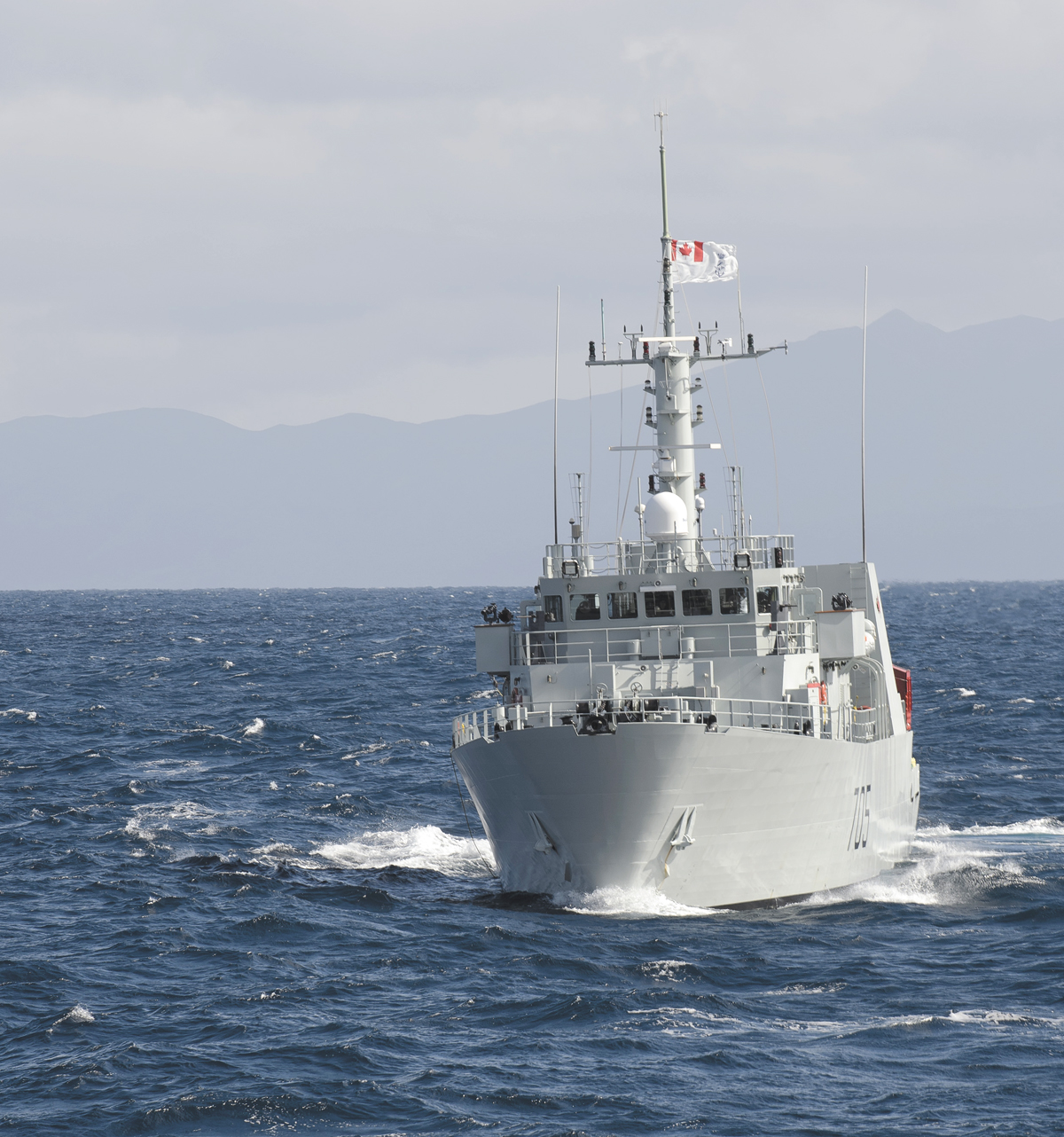Storm complicates navy’s rescue of sailboat, crew
By Lookout on Aug 24, 2020 with Comments 0
Peter Mallett, Staff Writer ~
Two civilian sailors and their dogs are safe on shore after a rescue at sea by HMCS Whitehorse.
The Maritime Coastal Defence Vessel, currently deployed on a coastal surveillance search and rescue (SAR) mission, responded to a mayday at 11 p.m. during a fierce storm Aug. 16. An 11-metre sailboat had become disabled in heavy seas off the northwest coast of Vancouver Island.
“The vessel’s outboard motor had stopped working and the sails were ripped in multiple places, so they were drifting uncontrollably,” said LCdr Jeff Chura, Commanding Officer of Whitehorse. “Without any steering and propulsion, they were violently thrashing around, with wild pitching up and down, a 30 to 40 degree roll side to side, and would suddenly spin completely around on a swell.”
Without a radio aboard, the two sailors waved down fishing vessel Pacific Viking, who relayed a May Day to Coast Guard radio.
The Joint Rescue Coordination Centre (JRCC) then tasked Whitehorse to provide support.
“While Whitehorse was en route to the location, Pacific Viking attempted to take the sailing vessel under tow, but all the deck fittings on the sailboat kept snapping off due to the strain of the high winds and sea state,” said LCdr Chura.
Once on scene, Whitehorse’s LS Lombardi, LS Kathol, and Canadian Coast Guard (CCG) Rescue Specialist Wesley Scott took the rigid hull inflatable boat (RHIB) to the stricken sailboat. They verified there were no injuries aboard and then embarked the two sailors and their canine companions.
The Commanding Officer then turned to SLt Gomery for guidance on how to tow the stricken vessel.
“He has a 15-year history of both owning and racing his own sailing vessels, so I was able to consult with him for expert knowledge of yacht design and specifications. He was able to tell me that the masts of sailing vessels of this size are fitted right through the hull and are attached directly to the keel of the boat, so it can take a huge amount of strain. In light of this information, and the fact that all the other fittings on board the vessel had already broke, I decided to attempt the tow via the mast.”
Once that decision had been made, it still took an hour of attempts to successfully get a line attached to the mast, and get the vessel under tow via the ship’s RHIB.
“The heavy winds and sea state, the near total darkness, the erratic movements of the sailing boat, and the inability to board the boat made this one of the more dangerous and tricky SARs I’ve personally been involved with,” said LCdr Chura.
With the sailing vessel under tow, it took approximately five hours to reach Winter Harbour as the seas were up to three metres. They arrived around 8 a.m. and disembarked the four thankful impromptu passengers.
“I can say with all certainty, and with great pride, that the crew of Whitehorse reacted swiftly and professionally, and, while working closely with our partners in JRCC and the CCG, represented the RCN with the highest of standards,” said LCdr Chura
Twice a year, ships of the Pacific Fleet take part in SAR Zone Patrols to provide an on-water presence and a ready capability to assist those people and vessels in danger, or requiring help, along the British Columbia coastline.
––––
Filed Under: Top Stories
About the Author:






